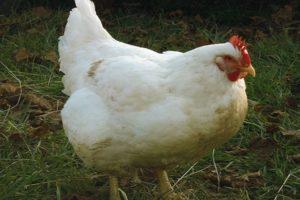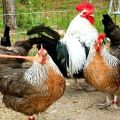Descriptions of the 11 best breeds of broiler chickens for breeding at home
Without exception, all broiler chicken breeds are actively gaining weight. In order to grow them, you need only 1.5-2 months. Chickens gain 40-65 grams in just a day, although they eat as much as ordinary birds. Broilers do not need any special care. The main thing is cleanliness and regular feeding. In 2 months, they eat no more than 2 kilograms of compound feed, and at this age they already weigh 2.5 kilograms.
How were they bred?
Broilers are a hybrid variety bred by crossing several breed lines. To obtain hybrids, meat and meat-egg directions are used. Broilers are not a breed at all, but the popular name for meat chickens. Birds are specially bred for meat. The word "broiler" is translated as "fry", which means that chicken meat is suitable for frying over a fire.
Initially, for the sake of obtaining hybrids, breeds of birds such as the Cornish and the White Plymouth Rock were taken. Cornish were attracted as fathers and Plymouthrocks as brood hens. Breeds such as New Hampshire, Brahma, Fighting Cornish, Langshan, Jersey Black Giant are used to breed new broiler chickens.
Broilers obtained from crossing are distinguished by developed meat forms, high weight, large breast and excellent taste characteristics of meat. Broiler chickens grow rapidly and gain weight. They eat the same amount as common chickens. Growing a broiler for up to 2 months (before slaughter) takes 2-3 kilograms of dry feed. At two months of age, they weigh 2 or more kilograms, the weight of an adult chicken is almost 5 kilograms.
In the production of chickens, special requirements are imposed on the commercial quality of carcasses. The bird should not have dark feathers and dark skin. Parent breeds should have a dominant, snow-white plumage and yellowish (pale) skin.
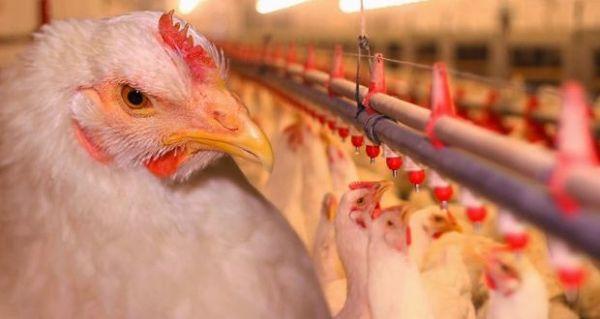
As a result of crossing, chickens with light (sometimes red) feathers are obtained. The hybrids have a large body, a small head, and muscular legs. Birds have poorly developed ridges and beards. Chickens are inactive, they have a calm nature.
Broilers are active in gaining live weight. At 6-9 weeks of age, the chickens are ready for slaughter. At this age, their weight is 2.45-3 kilograms. Broilers lay well, they produce about 120-180 eggs per year. However, all the positive qualities of the parents are not passed on to their offspring. Broiler chickens are bred only by selective breeding.
In order to breed broilers, you need to buy ready-made day old chicks or hybrid hatching eggs.
Advantages and disadvantages
Pros of broiler breeding:
- active weight gain;
- low cost of the final product (meat);
- wonderful taste and market characteristics;
- crosses have high immunity and good survival rates.
Cons of growing:
- low egg production rates;
- insufficient bones strength due to rapid weight gain.
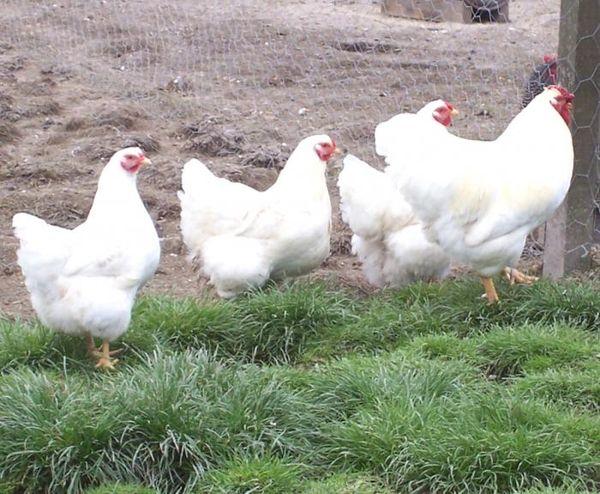
Best Broiler Breeds
In science, all broilers are called crosses. These hybrids have taken all the best characteristics of the parent breeds. A large number of broilers were bred.
ROSS-308
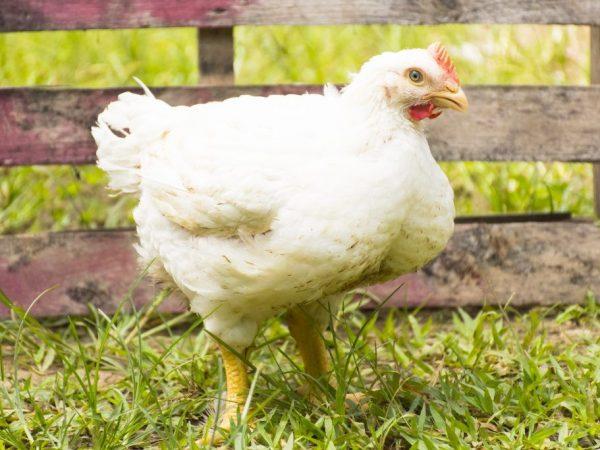
Chickens of this variety recover quickly. Young broilers gain 56-66 grams every day. Birds are killed at two months of age. By this time, they weigh 2.45 kilograms. Adult chickens lay well, they can give 186 eggs per year. This cross has short stature, large bones, well-developed muscle mass, light plumage, pale skin.
COBB-500
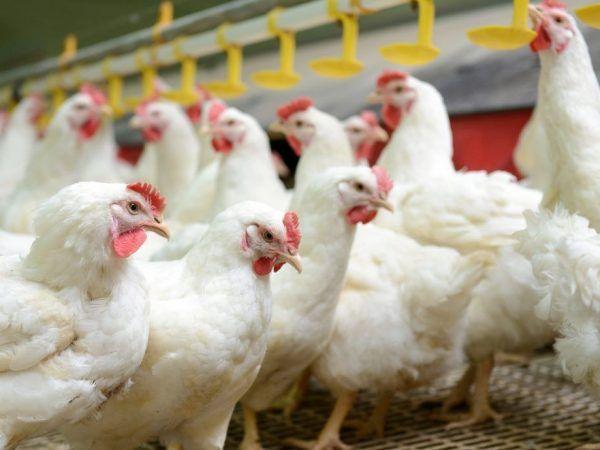
These are broilers with white plumage and yellowish skin. The hybrid has a light and large breast. Birds can be slaughtered as early as 45-60 days. At this age, they weigh 2-2.55 kilograms. Broilers are very actively recovering.
COBB-700

These are large chickens with snow-white plumage and yellowish carcasses. Unlike other broilers, this cross does not have large thighs, but it has a large breast. Young growth is ready for slaughter at 1.5 months. During this period, the birds weigh 2.56 kilograms.
ROSS-708
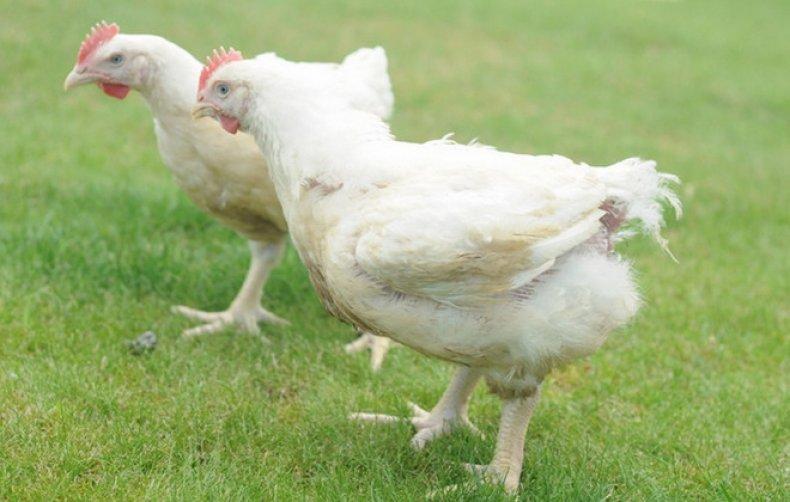
An improved hybrid from the cross ROSS-308. Young chickens recover and grow quickly. With regular feeding at the age of 40 days, they weigh almost 2.45-3 kilograms. Due to too rapid development, meat and skin do not have time to acquire a yellowish color, therefore, the carcasses have a pale appearance. The cross has light feathers, a large breast and medium-sized thighs.
Broiler 61
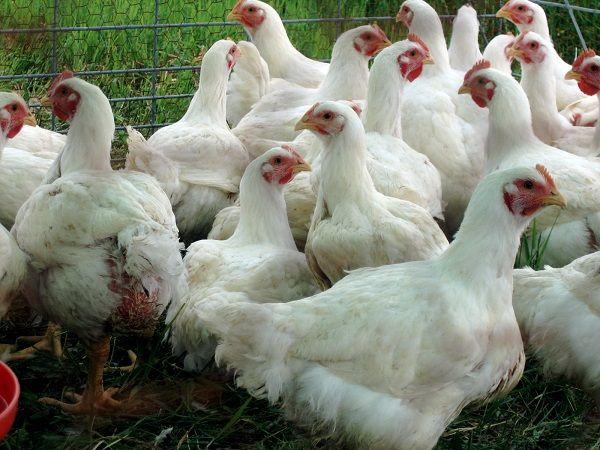
This species belongs to four-line meat crosses. Birds gain weight quickly. By the age of 1.5 months, they weigh 1.8 kilograms. The birds have snow-white plumage, yellowish skin. Adult layers can produce 144 eggs per year. Chickens have high survival rates.
Hybro-6

A four-line hybrid resulting from the crossing of two maternal and two paternal breeds. When the birds are 1.5 months old, they weigh 1.5 kilograms. Chickens have yellow skin, subcutaneous fat, thick white plumage. The comb looks like a leaf. Adult laying hens produce about 155 eggs per year.
Cross Change
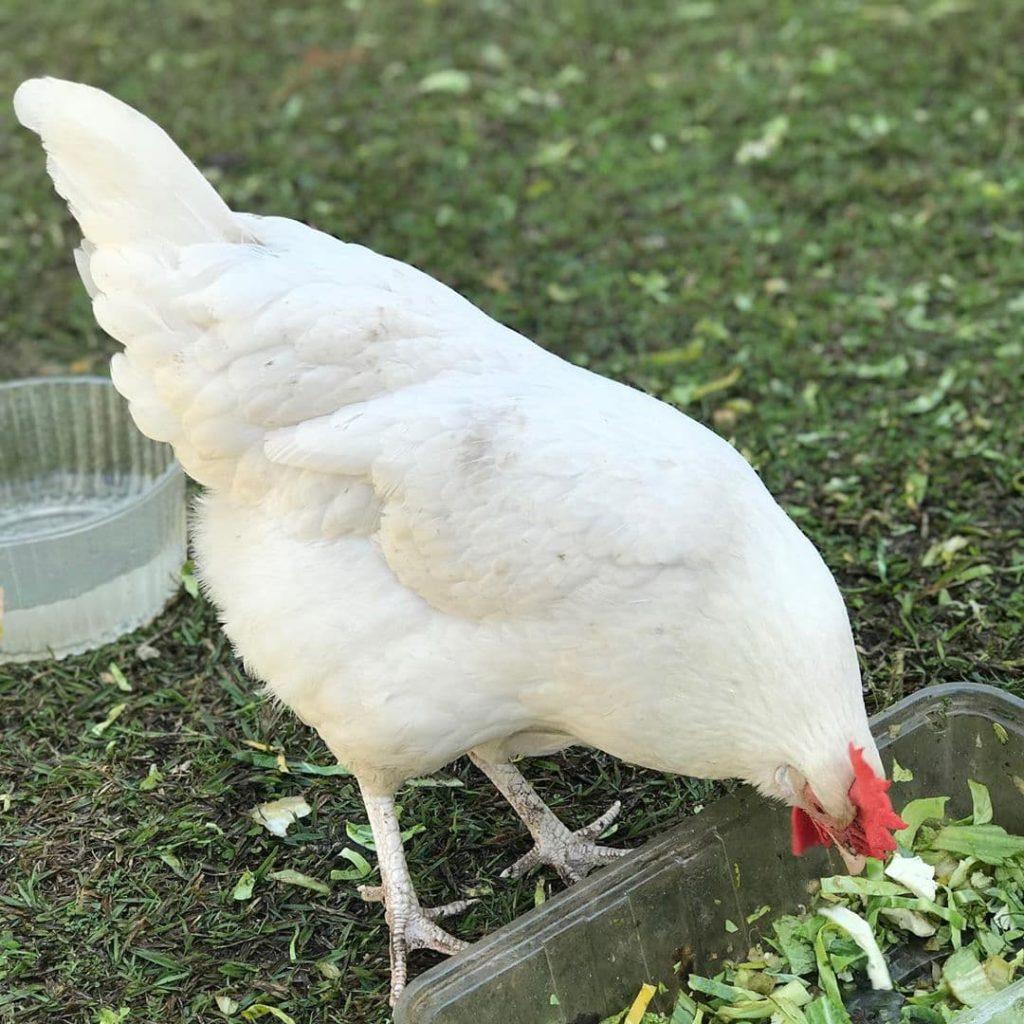
A hybrid obtained from crossing 4 breeds (domestic and foreign). Chickens have a muscular body, snow-white feathers. Birds are actively gaining weight, every day their weight increases by 56-60 grams. Chickens are killed on day 40, their weight by this age is 2.3 kilograms. In addition to meat, up to 165 eggs per year can be obtained from hens.
Broiler-M
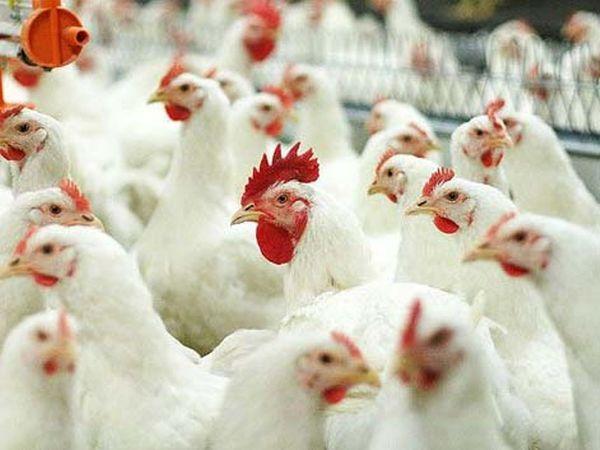
The hybrid was created as a result of crossing of mini-chickens and the Red Yerevan breed. In addition to meat, these chickens can give up to 162 eggs per year. True, birds begin to rush at the age of six months. Broilers are bred for meat. Slaughter when the chickens gain 2.5-3 kilograms. At two months of age, broilers weigh 1.9 kilograms.
Hubbard F-15
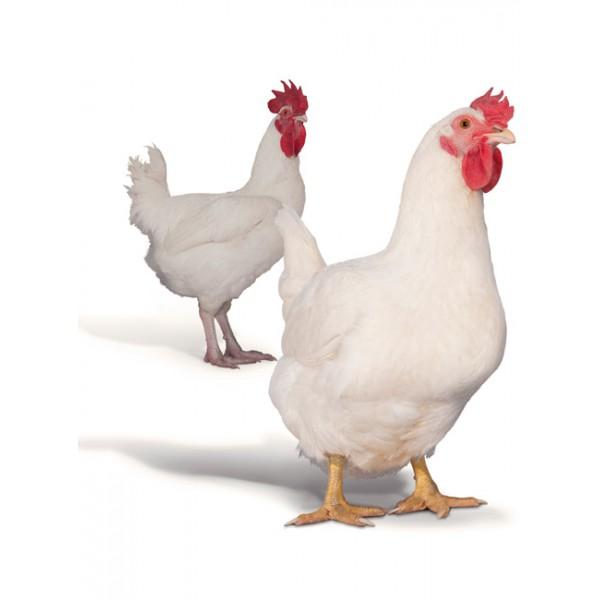
A hybrid with high productivity rates. At two months of age, young birds weigh about 3 kilograms. These are chickens with developed forms, large white breast, light plumage. With good nutrition, adult birds can gain 8 kilograms. Laying hens produce almost 200 large eggs per year.
Competitor-3
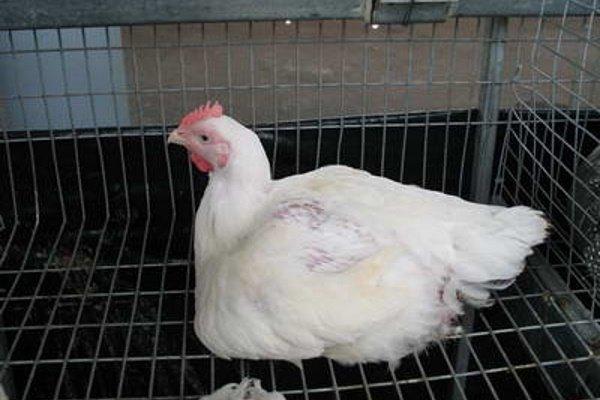
Cross obtained from crossing the breed ROSS-308 and Plymouthrocks. The birds have snow-white feathers, a strong constitution, a wide chest. At the age of 1.5 months, chickens weigh 2.15 kilograms. Adult layers can produce 165 eggs per year.
Arbor Ayrex
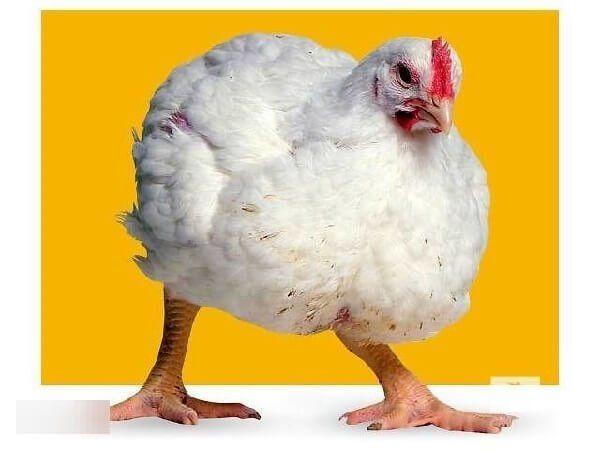
This is a heat-loving bird that is raised for dietary meat.Chickens have light plumage, strong bones, large breasts, well-developed hips and legs. At 1.5 months, the chicken weighs 2.45 kilograms.
Growing features
It is profitable to grow broilers for meat. In just 2-2.5 months, chickens gain up to 2.5-3 kilograms of weight. They contain broilers, like regular poultry. Purchased chickens are provided with a temperature of 30-33 degrees Celsius. Little chicks are kept in cardboard boxes. When the birds grow up a little, they are transferred to a regular chicken coop. The air temperature should be 22-25 degrees Celsius.
The room where the chicks are kept should be warm and clean. Small chickens are fed with a special starter compound feed, millet, cottage cheese, egg yolk, herbs and vegetables are gradually introduced. Adult crosses are given granulated feed, various cereals.
There must be a drinking bowl with fresh water in the chicken coop. It is advisable to give birds vitamins (Biovit) and minerals, as well as drugs (Enrofloxacin, Baykoks) for prevention.
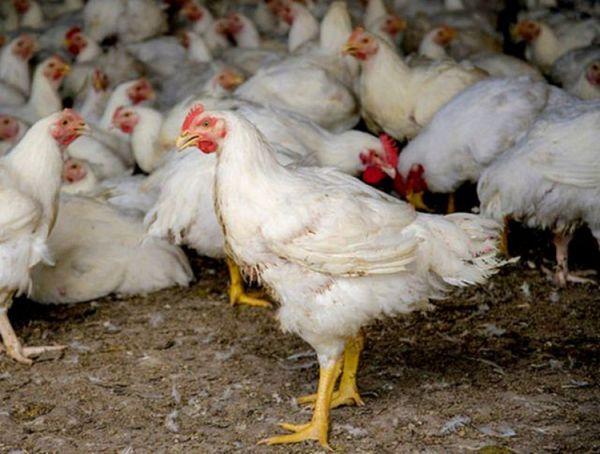
Home breeds
Broiler birds can be raised at home just like normal chickens. For 1.5-2 months, the hybrid gains 2-2.45 kilograms of weight. Among the rapidly growing crosses, the ROSS-708 enjoys a well-deserved authority. After 40 days, the chickens already weigh 2.89 kilograms. This is the largest and most meaty bird. The cross ROSS-308 is no less interesting. Every day the weight of chickens increases by 56-66 grams. At 2 months, chickens already weigh 2.45 kilograms.
KOBB-500 chickens are no less productive. These are early maturing, which by 1.5 months gain weight more than 2 kilograms. True, the productivity of the breed depends on the conditions of detention. Chickens grow better if they are fed correctly and regularly. This breed has high chick survival rates.
Those who plan to raise birds for meat and for the sake of eggs can be advised to purchase a Broiler-M cross. This is an unpretentious hybrid breed of chickens that feels comfortable in a chicken coop or in a cage. A hen can produce 165 eggs per year. The mass of one is 65-70 grams.
To grow broilers, first of all, you need to purchase young growth. Day-old chicks cost $ 0.3-0.5. Hatching eggs are cheaper. Their cost is $ 0.2-0.3. Each bird, up to two months of age, eat feed for 0.25-0.50 dollars. But on the finished carcass, you can save $ 3-5.

